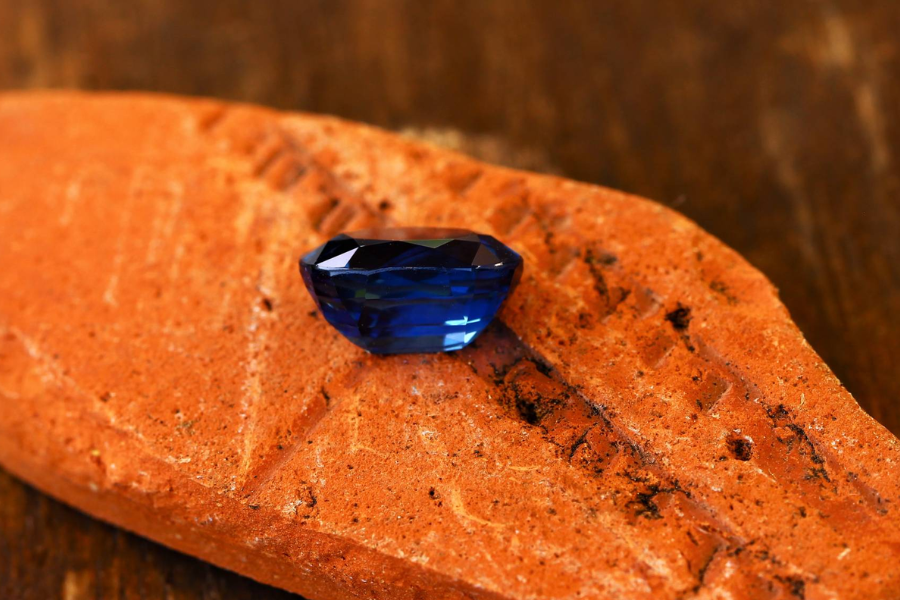The Allure of Sapphire Gemstones: A Comprehensive Guide And More
Sapphire gemstones have long been celebrated for their stunning beauty and timeless elegance. With vibrant colors and remarkable qualities, these precious stones have captivated the human imagination for centuries. This article explores the characteristics of sapphires, their various types, and their significance in the world of gemstones.
What is a Sapphire Gemstone?
Sapphire is a variety of the mineral corundum, composed primarily of aluminum oxide. While blue is the most iconic hue associated with sapphires, these gemstones can be found in an array of colors, except red, which is classified as ruby. Renowned for their hardness and durability, sapphires are a popular choice for fine jewelry, making them a cherished addition to any collection.
Key Features of Sapphire Gemstones
1. Vibrant Colors
Sapphires are famous for their deep blue color, but they can also be found in various shades, including pink, yellow, green, and even colorless. The distinct color of a sapphire is influenced by trace elements such as iron and titanium, which impart their unique hues. The most coveted sapphires exhibit an intense and evenly distributed color, enhancing their overall allure.
2. Exceptional Durability
One of the standout features of sapphires is their remarkable hardness. On the Mohs scale of mineral hardness, sapphires rank 9 out of 10, making them among the hardest gemstones available. This durability ensures that sapphires are suitable for daily wear in jewelry pieces such as rings and bracelets, maintaining their beauty over time.
3. Brilliant Luster
Sapphires exhibit a brilliant luster due to their high refractive index. When expertly cut, these gemstones reflect light beautifully, enhancing their overall sparkle and visual appeal. The quality of a sapphire’s cut significantly impacts its brilliance, making craftsmanship an essential factor in their value.
4. Varied Treatments
Many sapphires undergo treatments to enhance their color and clarity. Common treatments include heat treatment, which improves color, and the use of fillers to address surface flaws. Natural, untreated sapphires are rarer and often more valuable, making them highly sought after by collectors and connoisseurs.
Types of Sapphire Gemstones
1. Blue Sapphires
Blue sapphires are the most well-known and sought-after variety. Their rich, deep blue color is often associated with luxury and sophistication. Famous examples include the Hope Diamond and Princess Diana’s iconic engagement ring. The value of blue sapphires depends on factors such as color, clarity, cut, and carat weight, with exceptional pieces commanding high prices.
2. Pink Sapphires
Pink sapphires are gaining popularity in modern jewelry designs, ranging from soft pastel pinks to vibrant magentas. Their romantic and feminine appeal makes them a favorite for engagement rings and fine jewelry. These gemstones are primarily sourced from Sri Lanka, Madagascar, and Tanzania, providing a unique alternative to traditional diamonds.
3. Yellow Sapphires
Yellow sapphires bring warmth and brightness to any piece of jewelry, with shades ranging from pale lemon yellow to rich golden tones. Associated with prosperity and success, yellow sapphires are often chosen for their cheerful appearance. Major sources include Sri Lanka, Thailand, and Australia.
4. Padparadscha Sapphires
Padparadscha sapphires are rare and highly prized for their delicate pink-orange hues. Named after the Sanskrit word for “lotus flower,” these gemstones are valued for their uniqueness and beauty, often fetching high prices in the market.
Significance and Uses of Sapphires
Symbolism
Sapphires are often associated with wisdom, nobility, and purity. In various cultures, they are believed to offer protection and spiritual insight to their wearers. Their enduring beauty and rich symbolism make them a popular choice for engagement rings and heirloom jewelry.
Jewelry Applications
Thanks to their durability and brilliant luster, sapphires are frequently used in a variety of jewelry pieces. They can be found in rings, necklaces, earrings, and bracelets. The versatility of sapphires allows them to complement both classic and modern designs, making them a favorite among jewelers and consumers alike.
Historical Significance of Sapphires
Sapphires have held a significant place in various cultures throughout history. In ancient Persia, it was believed that the earth rested on a giant sapphire, which reflected its beautiful blue color onto the sky. During the Middle Ages, clergy wore blue sapphires to symbolize Heaven. Royals adorned themselves with sapphires, associating the gem with wisdom, virtue, and good fortune. Today, sapphires continue to symbolize nobility, truth, and faithfulness, carrying centuries of rich history.
The Formation of Sapphires
Geological Process
Sapphires form under extreme conditions deep within the earth’s crust. They develop in metamorphic and igneous rocks, where high temperatures and pressures allow the corundum mineral to crystallize. The presence of trace elements, such as iron, titanium, and chromium, gives sapphires their distinctive colors. This geological process can take millions of years, resulting in the stunning gemstones we cherish today.
Locations Where Sapphires Are Found
Sapphires are mined in various locations around the world, each contributing to the gemstone’s unique characteristics. Sri Lanka, known as the “Island of Gems,” is renowned for producing high-quality blue and pink sapphires. Myanmar (Burma) is famous for its deep blue sapphires, while Madagascar has become a significant source of a wide range of colored sapphires in recent years. Other notable sources include Thailand, Australia, and Tanzania, each offering sapphires with distinct qualities and hues.
Sapphires in Jewelry
Engagement Rings
Sapphires have become increasingly popular choices for engagement rings, offering a vibrant alternative to traditional diamonds. Their rich color and exceptional durability make them ideal for daily wear. Celebrities and royals alike have opted for sapphire engagement rings, with Princess Diana’s iconic blue sapphire ring now worn by Kate Middleton. Whether paired with diamonds or standing alone, sapphire engagement rings exude elegance and timeless beauty.
Necklaces
Sapphire necklaces are a stunning way to showcase the gem’s beauty and versatility. From delicate pendants to elaborate statement pieces, sapphire necklaces can be crafted to suit any style. These pieces often feature sapphires in various colors, complemented by diamonds and other gemstones, adding sophistication to any outfit.
Earrings
Sapphire earrings are perfect for adding a pop of color and elegance to any look. Available in a range of styles, from simple studs to intricate drop designs, sapphire earrings can be tailored to personal preferences. The durability of sapphires ensures that these earrings will remain beautiful over time, making them a versatile accessory for everyday wear or special occasions.
Bracelets
Sapphire bracelets offer a beautiful way to incorporate the gem into daily wear. These bracelets can range from delicate chains with sapphire accents to bold cuff designs adorned with multiple stones. The variety of colors allows for endless design possibilities, making them suitable for both casual and formal occasions.
Symbolism and Meanings of Sapphires
Sapphires in Different Cultures
Sapphires have held various symbolic meanings across different cultures throughout history. In ancient Greece and Rome, blue sapphires were believed to protect their owners from harm and envy. In Hindu culture, yellow sapphires are associated with the planet Jupiter and are worn to bring wealth and wisdom. In medieval Europe, sapphires were believed to protect wearers from envy and harm, symbolizing divine favor. These diverse cultural associations add depth to the meanings attributed to sapphires.
Modern Symbolism
In contemporary times, sapphires continue to symbolize a range of positive attributes. Blue sapphires are often associated with wisdom, virtue, and good fortune. They are considered stones of mental focus and inner vision. Pink sapphires symbolize love, compassion, and feminine energy, while yellow sapphires are linked to prosperity and abundance. The enduring symbolism of sapphires makes them meaningful choices for various personal and celebratory occasions.
Choosing the Perfect Sapphire
Color and Clarity
When selecting a sapphire, color is one of the most critical factors to consider. The most prized sapphires exhibit a rich, vivid color that is evenly distributed throughout the stone. Clarity is also important; while sapphires often contain natural inclusions, those with fewer visible flaws are more valuable. It’s essential to view sapphires under different lighting conditions to appreciate their true color and brilliance.
Cut and Carat Weight
The cut of a sapphire significantly affects its overall appearance and value. A well-cut sapphire will reflect light beautifully, enhancing its natural color and sparkle. Common cuts for sapphires include oval, round, cushion, and emerald. Carat weight, while less crucial than color and clarity, also plays a role in determining a sapphire’s value. Larger sapphires are rarer and can command higher prices, but smaller stones with exceptional color and clarity can be equally captivating.
Sapphire Treatments and Enhancements
Heat Treatment
Heat treatment is a common practice used to enhance the color and clarity of sapphires. This process involves exposing the stones to high temperatures, which can improve their appearance without compromising their natural properties. Heat-treated sapphires are considered permanent and stable, making them widely accepted in the gemstone market. It’s essential to disclose any treatments a sapphire has undergone when purchasing to ensure transparency and value.
Diffusion Treatment
Diffusion treatment is another method used to enhance a sapphire’s color. This process involves infusing elements such as beryllium into the stone at high temperatures, resulting in more vibrant and uniform colors. While diffusion-treated sapphires can be beautiful, their color alteration is often surface-deep and may not be as stable as heat-treated stones
“Discover engaging profiles and expert insights on influential people at leomorg.org.”







